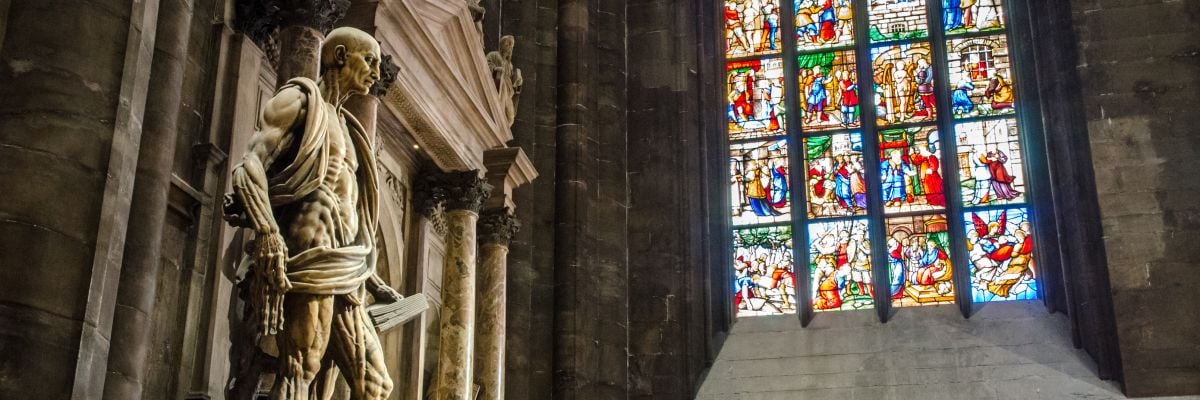
Question:
Answer:
Here are excerpts from two articles on the canonization of saints; they are taken from The New Catholic Encyclopedia (1967):
The solemn act by which the pope, with definitive sentence, inscribes in the catalogue of saints a person who has previously been beatified. By this act he declares that the person placed on the altar now reigns in eternal glory and decrees that the universal Church show him the honor due to a saint. The formulas indicate that the pope imposes a precept on the faithful, e.g. “We decide and define that they are saints and inscribe them in the catalogue of saints, stating that their memory should be kept with pious devotion by the universal Church.”
The faithful of the primitive Church believed that martyrs were perfect Christians and saints since they had shown the supreme proof of love by giving their lives for Christ; by their sufferings, they had attained eternal life and were indefectibly united to Christ, the Head of the Mystical Body. These reasons induced the Christians, still oppressed by persecution, to invoke the intercession of the martyrs. They begged them to intercede before God to obtain for the faithful on earth the grace to imitate the martyrs in the unquestioning and complete profession of faith (1 Tm 2:1-5, Phil 3:17) .
Toward the end of the great Roman persecutions, this phenomenon of veneration, which had been reserved to martyrs, was extended to those who, even without dying for the faith, had nonetheless defended it and suffered for it, confessors of the faith (confessores fidei). Within a short time, this same veneration was extended to those who had been outstanding for their exemplary Christian life, especially in austerity and penitence, as well as to those who excelled in Catholic doctrine (doctors), in apostolic zeal (bishops and missionaries), or in charity and the evangelical spirit. . . .
In the first centuries the popular fame or the vox populi represented in practice the only criterion by which a person’s holiness was ascertained. A new element was gradually introduced, namely, the intervention of the ecclesiastical authority, i.e., of the competent bishop. However, the fame of sanctity, as a result of which the faithful piously visited the person’s tomb, invoked his intercession, and proclaimed the thaumaturgic [miraculous] effects of it, remained the starting point of those inquiries that culminated with a definite pronouncement on the part of the bishop. A biography of the deceased person and a history of his alleged miracles were presented to the bishop. Following a judgment of approval, the body was exhumed and transferred to an altar. Finally, a day was assigned for the celebration of the liturgical feast within the diocese or province.
The transition from episcopal to papal canonization came about somewhat casually. The custom was gradually introduced of having recourse to the pope in order to receive a formal approval of canonization. This practice was prompted obviously because a canonization decreed by the pope would necessarily have greater prestige, owing to his supreme authority. The first papal canonization of which there are positive documents was that of St. Udalricus in 973. . . . Through the gradual multiplications of the Roman pontiffs, papal canonization received a more definite structure and juridical value. Procedural norms were formulated, and such canonical processes became the main source of investigation into the saint’s life and miracles. Under Gregory IX, this practice became the only legitimate form of inquiry (1234). . . .
The dogma that saints are to be venerated and invoked as set forth in the profession of faith of Trent (cf. Denz. 1867) has as its correlative the power to canonize. . . . St. Thomas Aquinas says, “Honor we show the saints is a certain profession of faith by which we believe in their glory, and it is to be piously believed that even in this the judgment of the Church is not able to err” (Quodl. 9:8:16).
The pope cannot by solemn definition induce errors concerning faith and morals into the teaching of the universal Church. Should the Church hold up for universal veneration a man’s life and habits that in reality led to [his] damnation, it would lead the faithful into error. It is now theologically certain that the solemn canonization of a saint is an infallible and irrevocable decision of the supreme pontiff. God speaks infallibly through his Church as it demonstrates and exemplifies its universal teaching in a particular person or judges that person’s acts to be in accord with its teaching.
May the Church ever “uncanonize” a saint? Once completed, the act of canonization is irrevocable. In some cases a person has been popularly “canonized” without official solemnization by the Church . . . yet any act short of solemn canonization by the Roman pontiff is not an infallible declaration of sanctity. Should circumstances demand, the Church may limit the public cult of such a person popularly “canonized.” (vol. 3, 55-56, 59, 61)


